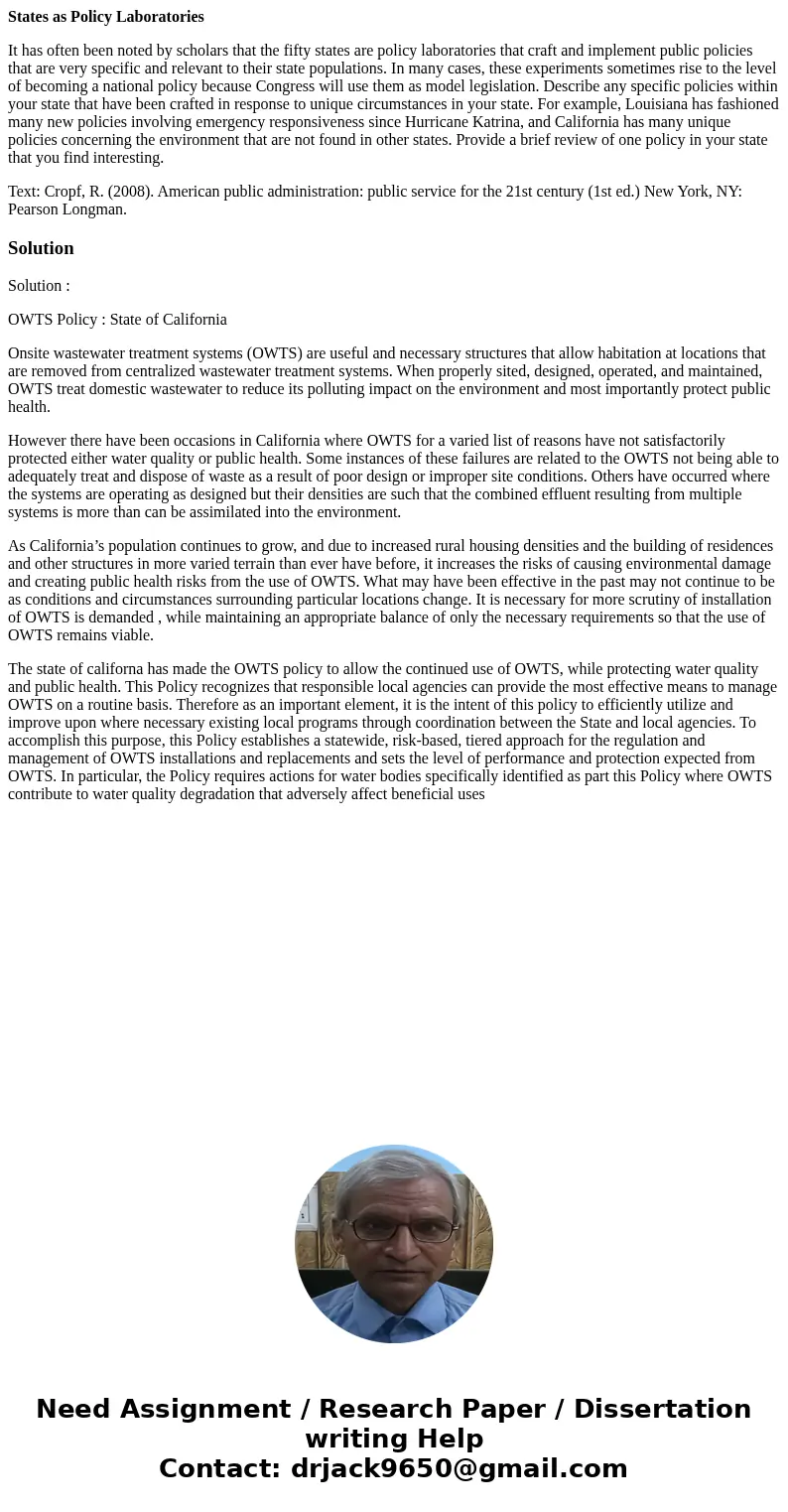States as Policy Laboratories It has often been noted by sch
States as Policy Laboratories
It has often been noted by scholars that the fifty states are policy laboratories that craft and implement public policies that are very specific and relevant to their state populations. In many cases, these experiments sometimes rise to the level of becoming a national policy because Congress will use them as model legislation. Describe any specific policies within your state that have been crafted in response to unique circumstances in your state. For example, Louisiana has fashioned many new policies involving emergency responsiveness since Hurricane Katrina, and California has many unique policies concerning the environment that are not found in other states. Provide a brief review of one policy in your state that you find interesting.
Text: Cropf, R. (2008). American public administration: public service for the 21st century (1st ed.) New York, NY: Pearson Longman.
Solution
Solution :
OWTS Policy : State of California
Onsite wastewater treatment systems (OWTS) are useful and necessary structures that allow habitation at locations that are removed from centralized wastewater treatment systems. When properly sited, designed, operated, and maintained, OWTS treat domestic wastewater to reduce its polluting impact on the environment and most importantly protect public health.
However there have been occasions in California where OWTS for a varied list of reasons have not satisfactorily protected either water quality or public health. Some instances of these failures are related to the OWTS not being able to adequately treat and dispose of waste as a result of poor design or improper site conditions. Others have occurred where the systems are operating as designed but their densities are such that the combined effluent resulting from multiple systems is more than can be assimilated into the environment.
As California’s population continues to grow, and due to increased rural housing densities and the building of residences and other structures in more varied terrain than ever have before, it increases the risks of causing environmental damage and creating public health risks from the use of OWTS. What may have been effective in the past may not continue to be as conditions and circumstances surrounding particular locations change. It is necessary for more scrutiny of installation of OWTS is demanded , while maintaining an appropriate balance of only the necessary requirements so that the use of OWTS remains viable.
The state of californa has made the OWTS policy to allow the continued use of OWTS, while protecting water quality and public health. This Policy recognizes that responsible local agencies can provide the most effective means to manage OWTS on a routine basis. Therefore as an important element, it is the intent of this policy to efficiently utilize and improve upon where necessary existing local programs through coordination between the State and local agencies. To accomplish this purpose, this Policy establishes a statewide, risk-based, tiered approach for the regulation and management of OWTS installations and replacements and sets the level of performance and protection expected from OWTS. In particular, the Policy requires actions for water bodies specifically identified as part this Policy where OWTS contribute to water quality degradation that adversely affect beneficial uses

 Homework Sourse
Homework Sourse